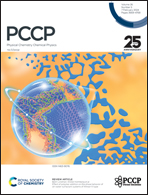Nanostructure and thermal characteristics of silica/human serum albumin systems based on a modified nanosilica entero-vulnerosorbent†
Abstract
Entero-vulnerosorbents based on geometrically modified (GM) (mechanical treatment at different times, tMT = 1, 4, and 7 h) fumed nanosilica A300 (NS) and protein molecules (human serum albumin/GM-nanosilica systems) were characterized with a focus on their surface, morphology, topography, and thermal properties. Microscopic, spectroscopic, and analytical techniques, including atomic force microscopy (AFM), optical profilometry (OP), high-resolution transmission electron microscopy (HRTEM), energy dispersive X-ray spectroscopy (EDX), X-ray photoelectron spectroscopy (XPS), and elemental analysis (CHN), were used. The differentiation in the surface morphology, micro–nanoroughness, surface chemistry, thermal properties of the silica support, and protein/nanosilica systems were found. AFM, OP, and HRTEM microscopic methods showed that the albumin/silica composite surface is less rough, wavy, and asymmetrical; it is also smoother, flat, and homogeneous because of the formation of a continuous layer of a protein film on the support surface. CHN, XPS, and S/TEM-EDX analysis showed that HSA adsorbed on the unmodified and GM-treated silica carrier led to variations in the physical and chemical features of materials (elemental composition, element concentration, chemical states, chemical bonds between enzyme molecules, and silica surface). Thermal studies were carried out using a thermogravimetric technique linked with a quadrupole mass spectrometer (TG/DTG/DSC-QMS). The degradation of the HSA/nanosilica system is a two-stage process that takes place within the temperature range 160–450–900 °C.



 Please wait while we load your content...
Please wait while we load your content...